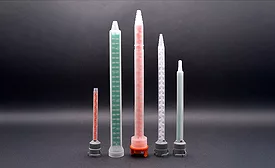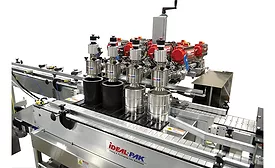Home » Keywords: » nozzles
Items Tagged with 'nozzles'
ARTICLES
The Next Generation of Static Mixing Nozzles
How 3D printing, paired with new science, is leading manufacturers to find new, ultra-efficient nozzles that are disrupting a 50-year industry.
December 15, 2022
Understanding Net Weight Filler Configuration and Performance
Gravimetric or net weight fillers have replaced other fill methods in the CASE industry due to their ease of automation, flexibility, and accuracy.
March 27, 2020
Innovation and the Future of Liquid Filling Machines for Adhesives and Sealants
Nozzles and gravity-fed direct-fill systems can improve filling accuracy and throughput.
June 2, 2014
Product Profile: Static Mixers
Mixer design enables complete mixing and flow division.
October 1, 2013
Innovative Dispensing Technology for Material Formulators
Technically advanced dispensing systems continue to evolve for the precision formulating of adhesives and sealants.
August 5, 2013
Keep the info flowing with our newsletters!
Get the latest industry updates tailored your way.
JOIN TODAY!Copyright ©2025. All Rights Reserved BNP Media.
Design, CMS, Hosting & Web Development :: ePublishing

.webp?height=168&t=1672175877&width=275)

